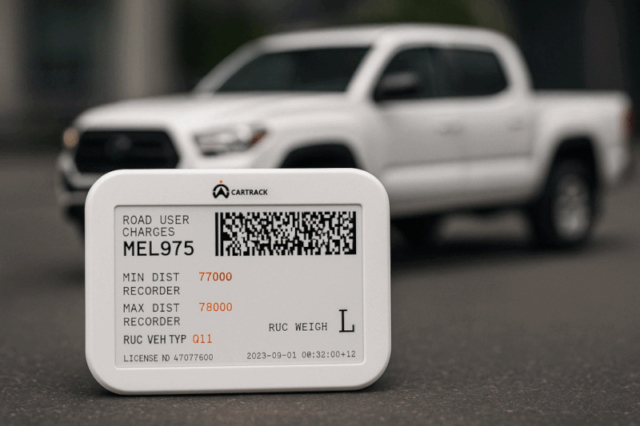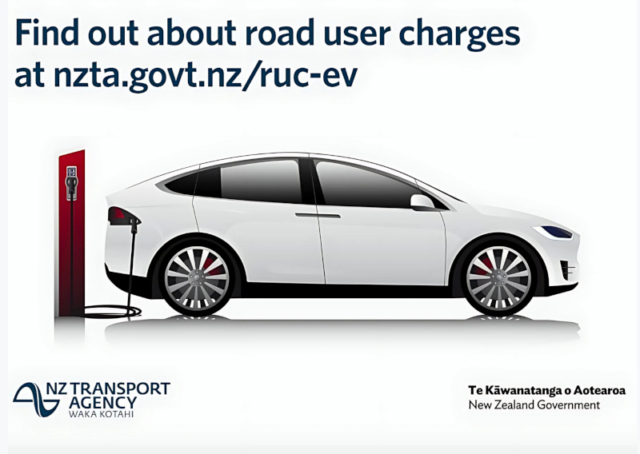Biggest change to RUC in 50 years

The rationale
A long-standing principle in land transport policy is that road users contribute to the costs of maintaining and improving the network. Most light vehicle drivers currently contribute through FED. However, FED is an imperfect proxy for road use, as how much people contribute varies significantly due to differences in a vehicle’s fuel efficiency. This disparity will grow as more fuel-efficient petrol vehicles enter the market, making the current revenue system less fair.
The current FED system means drivers of many fuel-efficient petrol vehicles contribute less per kilometre than drivers of diesel, electric, and larger petrol vehicles. Transitioning the entire fleet to a distance-based system is a more principled and fairer way to raise revenue, ensuring everyone pays their share based on their road use.
During the Select Committee process for bringing electric vehicles (EVs) into the RUC system, the fairness of the revenue system was a key issue raised in submissions. EV owners currently pay more through RUC than drivers of fuel-efficient petrol cars through FED that still produce emissions. The Select Committee agreed that moving all vehicles to a single system based on distance travelled is a fairer approach, as it ensures all light vehicles contribute based on their road use, regardless of their technology or fuel type, and aligns with the principle that all road users should contribute their fair share.
The existing RUC system
The RUC system was originally introduced in 1977 to ensure fairer competition between road and rail freight. Railways, which had to maintain their own networks, argued that fees paid by heavy road freight vehicles at the time did not cover the road wear they caused, creating an uneven playing-field. The RUC system’s main purpose was to ensure heavy vehicles paid for their impact on the roads.
At the time, there were almost no light diesel vehicles in the fleet, so it was designed with heavy vehicles in mind. Today, 1.3 million vehicle owners pay for their road use through the RUC system, and of these about 1.1 million are light diesel vehicles and EVs.
The system is based on the “fourth power rule”, an engineering principle where road wear increases exponentially with a vehicle’s axle weight. The system has over 80 different rates that incentivise operators to use vehicles that cause less damage to the network. The rates mean that heavy vehicles are responsible for covering almost all costs of maintenance needed as a result of damage to the roads.
For most light vehicles, there is only one rate. This is because light vehicles contribute a minimal amount to pavement wear, and the administrative complexity of multiple rates for minor weight differences would outweigh any benefit.
The light vehicle RUC rate is currently $76 per 1,000 kilometres including GST. Only about $1 of that rate relates to weight-based pavement wear, with the rest contributing towards costs of running the transport network, such as weather- and age-related maintenance, new infrastructure, road policing, and public transport.
The light petrol fleet
While transitioning just over 100,000 EVs into the RUC system was reasonably straightforward in 2024, moving 3.5 million light petrol vehicles is a much larger and more complex task. The existing RUC system needs to be reformed and improved before it can accommodate the light petrol fleet.

For most road users, the RUC system is largely manual, requiring users to monitor their odometers and pre-purchase paper licences. This manual system is not well-suited for the entire light fleet transitioning to RUC. Relying on the manual system would pose challenges to public acceptance, compliance, and revenue collection. Drivers of petrol vehicles would be moving from a seamless system that they do not need to think about and cannot avoid (fuel excise duty) to one with an administrative burden. A user-friendly payment system is needed.
The existing electronic RUC system (eRUC) is also unsuitable for most light vehicles. It is used by very few private motorists or light vehicles that are not part of a commercial fleet. eRUC is commonly used by heavy vehicles. Installation and service costs are high due to the need for devices to meet specific requirements, including the need for an outward-facing display instead of a label.
Instead of shifting all light vehicles to the existing manual system, the government will first modernise both the manual and eRUC systems. This includes legislative reform to allow the private sector to develop and deliver user-friendly services that are better suited to light vehicles.
Legislative reforms announced
The government plans several legislative changes:
- Removing the requirement to display and carry a RUC licence – this will enable more affordable eRUC solutions that do not have a screen.
- Reforming the requirements for distance recorders – this will enable a broader range of distance-recording instruments and technologies, including existing in-vehicle technology installed by manufacturers.
- Enabling flexible payment options – this will allow third parties to provide, for example, road user accounts with features like monthly post-payment, estimated billing, and automated payments.
- Clarifying the regulatory role of the RUC Collector – this will ensure a levelled playing field between the New Zealand Transport Agency Waka Kotahi and third-party providers.
The government is committed to ensuring any changes to the road user charges system respect privacy. Officials are working with the Office of the Privacy Commissioner to ensure protections are in place and upheld. This includes building on the existing privacy provisions in the Road User Charges Act 2012, which already limit what information the government can access and for what purpose. As is the case now, drivers will continue to have the choice of using either an electronic system or a manual option.
Third parties (private sector and otherwise), such as the Automobile Association (AA), have long been part of the RUC system. Private companies have been providing electronic RUC services in New Zealand since around 2008, and over half of the heavy vehicle fleet now uses their services to purchase and manage RUC.
The New Zealand Transport Agency’s existing system is not designed to provide functionality such as eRUC, flexible payment options, or road user accounts. Rather than building a new government system that can manage RUC for the entire light vehicle fleet, we will focus on relaxing regulations to allow the private sector to deliver more user-friendly solutions. The government aims to create the conditions that enable a competitive retail market for RUC management services, similar to those that exist for broadband or electricity.
The full transition to RUC of the petrol fleet, and the abolition of FED, will follow once a market in systems for light petrol vehicles is available. This is a complex undertaking that will require significant further work, additional legislative change, and close engagement with the public and stakeholders. A specific date for the switch has not been set, as its progress will be influenced by the development of RUC retail market and is a separate decision.
Next steps
The staged approach will help ensure the new system is ready for the entire fleet and a smooth transition. The government plans to pass legislation by 2026 to modernise the RUC framework.
The Ministry of Transport will be running a market engagement process later this year. This will provide an opportunity for interested parties to learn more about the government’s approach and provide feedback on how they might be involved in the future RUC system. We have already received interest from several additional third parties interested in being involved in the collection of RUC.
By 2027, the new system will allow private providers to offer a broader range of solutions to the existing RUC fleet (diesel, heavy, and electric vehicles).